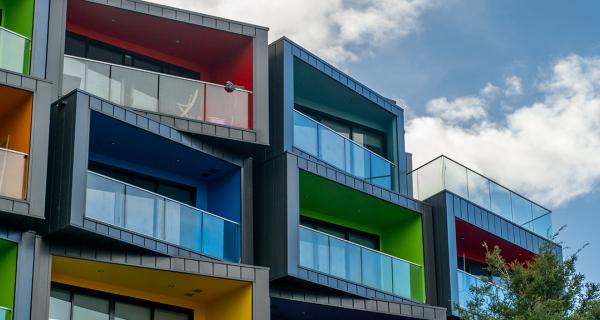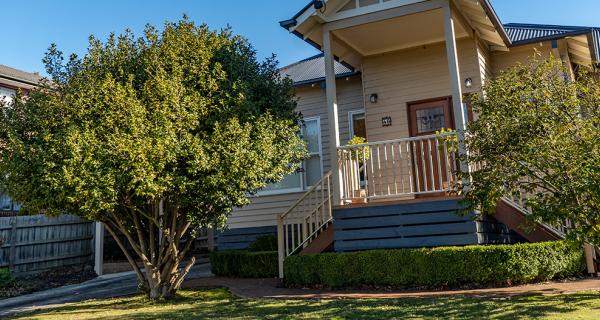Descriptors & Definitions for Statutory Planning Tree Assessments
Origin
| Indigenous |
The tree is endemic to the local area and has been naturally occurring since recordings of flora commenced |
| Native |
The tree is endemic to mainland Australia (including Tasmania) and has been naturally occurring since recordings of flora commenced |
| Exotic |
The tree is not endemic to any part of mainland Australia (including Tasmania) |
Health
This is based on vigour and vitality. In assessing health, observations are made of the following:
- foliage characteristics
- extension growth
- wound wood development
- extent of predation or disease
In many instances correct application of arboricultural management practices can revitalise a tree and extend its ability to provide a value to the community.
| Good |
- Tree displays 71-100% live canopy mass
- Foliage exhibits near optimal foliage characteristics in size, colour and density, appropriate for the species
- Extension growth typical or above typical for species
- Tree may have low levels of tip dieback
- Tree may exhibit low levels of pest/pathogen infestation that is not expected to have a significant impact on the long-term health of the tree
|
| Fair |
- Tree displays 51-70% live canopy mass
- Foliage may be reduced in size or discoloured
- Tree exhibits typical or somewhat reduced extension growth
- Tree has moderate pest/pathogen infestation which may be retarding growth and impacting on health levels, it is expected that the tree can recover with or without intervention
- Tree may be affected by abiotic factors that could be ameliorated
|
| Fair-poor |
- Tree displays <50% live canopy mass
- Foliage may be stunted, discoloured, deformed or thinning
- Tree exhibits reduced extension growth
- Tree may have extensive pest/pathogen infestation but could recover from such infestation with intervention
- Tree may be affected by abiotic factors that could be ameliorated
|
| Poor |
- Tree displays <50% live canopy mass
- Foliage likely to be stunted, discoloured, deformed or thinning
- Tree exhibits minimal extension growth
- Tree may have extensive pest/pathogen infestation and is not expected to recover from such infestation even with intervention
- Tree may be affected by abiotic factors that cannot be ameliorated
|
| Dead |
- The biological function of the tree has ceased with no apparent live tissue
|
Structure
This refers to the physical integrity and mechanical properties of the tree. Natural species form may not constitute poor structure. Pest/pathogen damage is not directly a structural issue, however, may contribute to structural issues/faults. In assessing structure, observations are made of the following:
- Branch attachment and union formation
- Damage to trunk/roots/unions/branches
- Trunk/scaffold/tertiary branch taper
In many instances correct application of arboricultural management practices can reduce likelihood of failure to an acceptable level and extend a tree’s ability to provide a value to the community.
| Good |
- Tree has good branch attachment and well-formed unions
- Tree has good trunk and scaffold branch taper
- Tree may have poor tertiary branch taper
- Tree may exhibit structural defects on lower order branches and attachments
- Complete tree failure or major structural failure under normal environmental
- conditions is unlikely
|
| Fair |
- Tree may have poor scaffold branch/stem taper
- Tree may have poor tertiary branch taper
- Tree may have minor structural root damage/severance
- Tree may exhibit structural defects to the trunk or scaffold branches
- Majority of structural defects may be managed through current recognised arboricultural practices
|
| Poor |
- Tree may exhibit major structural defects to trunk and/or scaffold branch attachments and/or roots
|
| Dangerous |
- The tree presents a foreseeable danger of inflicting damage, that cannot be alleviated by arboricultural management and or reasonable site modifications and/or;
- Major failure of the tree is imminent
|
Amenity Value
The visual contribution the tree makes to the neighbourhood character.
| High |
- Tree has good or fair health
- Tree is highly visible from the street and/or other streets
|
| Medium |
- Tree has good or fair health, and
- Tree is easily viewed from the street
|
| Low |
- Tree has poor health and/or
- Tree cannot be seen from the street
|
Useful Life Expectancy
The period of time that the tree is expected to maintain a positive contribution to the neighbourhood character.
High
(20 years +) |
- Tree is likely to be in good health and structure and is expected to maintain current levels of amenity for a minimum of 20 years
|
Medium
(10-19 years) |
- Tree is likely to be in fair or good health and/or structure and is expected to maintain current levels of amenity for a minimum of 10 years
|
Low
(4-9 years) |
- Tree is likely to be in poor or fair health and/or structure and is likely declining
- It is expected that the tree is not likely to maintain current levels of amenity for more than 9 years
|
Very Low
(0-3 years) |
- Tree is likely to be dead or is in poor health and/or has poor structure and is likely declining
- The tree is described as having a dangerous structure
- It is expected that the tree is not likely to maintain current levels of amenity for more than 3 years
|
Habitat Value
The value of the tree when considering whether it contributes to or has the potential to contribute to habitat for local fauna, including but not limited to birds, mammals and invertebrates. This includes food sources and perching opportunities that the tree may possess.
| High |
- Evidence of domiciling by fauna in the form of hollows, drays etc.
|
| Medium |
- No evidence of domiciling by fauna but the tree has the potential to possess naturally occurring or human installed forms of habitat
|
| Low |
- No evidence of domiciling by fauna and the tree has no real or practical potential to possess naturally occurring or human installed forms of habitat
|
Retention Value
The value of the tree when considering the tree as a whole. The health, structure, amenity value, habitat value, and life expectancy are considered when determining this factor. The tree’s location on the subject site or a development proposal is not a consideration for determining retention value.
| Very High |
- The tree is generally in good health and structure, provides high levels of amenity and habitat and is likely to do so for more than 20 years
- Tree may have historic or cultural or ecological significance
|
| High |
- The tree is generally in fair to good health and structure, provides medium levels of amenity and medium to low levels of habitat and is likely to do so for up to 19 years
|
| Moderate |
- The tree is generally in poor to fair health and structure, provides low levels of amenity and habitat and likely to do so for up to 10 years
- The tree may be juvenile or otherwise small and easily replaced by advanced plantings, or plantings that will provide similar amenity value in a reasonable timeframe
|
| Low |
- Tree is dead
- Tree has a dangerous structure and can cannot be alleviated by arboricultural management and/or reasonable site modifications
- The tree is generally in poor health and structure, providing no amenity with a low habitat value and likely to do so for up to 3 years
- Tree has a high/unacceptable risk when a tree risk assessment has been undertaken
|











